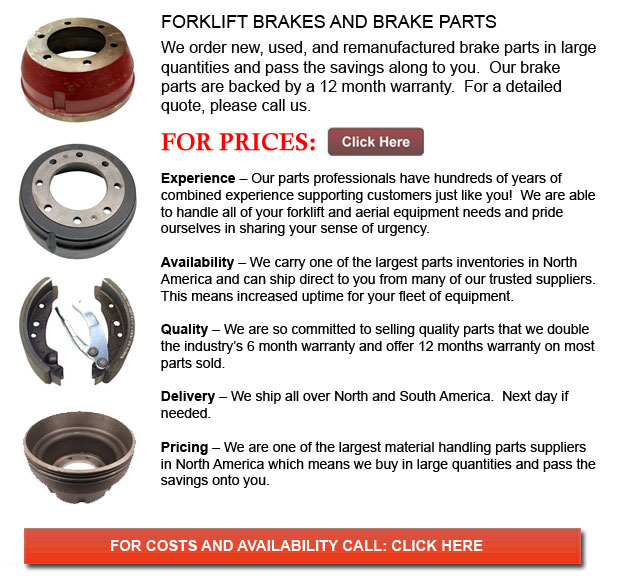
Brake for Forklift - A brake in which the friction is provided by a set of brake pads or brake shoes that press against a rotating drum unit called a brake drum. There are a few specific differences among brake drum types. A "brake drum" is normally the explanation provided if shoes press on the inner outside of the drum. A "clasp brake" is the term utilized so as to describe whenever shoes press next to the exterior of the drum. One more type of brake, called a "band brake" makes use of a flexible belt or band to wrap around the outside of the drum. Whenever the drum is pinched in between two shoes, it can be referred to as a "pinch brake drum." Similar to a standard disc brake, these types of brakes are somewhat uncommon.
Early brake drums, prior to nineteen ninety five, required to be consistently adjusted to be able to compensate for wear of the shoe and drum. "Low pedal" can cause the required adjustments are not carried out sufficiently. The vehicle could become dangerous and the brakes could become ineffective whenever low pedal is combined together with brake fade.
There are a variety of Self Adjusting Brake Systems offered, and they could be categorized within two main types, RAD and RAI. RAI systems have built-in tools that prevent the systems to be able to recover if the brake is overheating. The most popular RAI makers are Lucas, Bosch, AP and Bendix. The most well-known RAD systems include AP, Bendix, Ford recovery systems and Volkswagen, VAG.
The self adjusting brake will typically only engage when the vehicle is reversing into a stop. This method of stopping is acceptable for use whereby all wheels use brake drums. Disc brakes are utilized on the front wheels of vehicles these days. By operating only in reverse it is less likely that the brakes will be adjusted while hot and the brake drums are expanded. If tweaked while hot, "dragging brakes" could happen, which increases fuel consumption and accelerates wear. A ratchet device that becomes engaged as the hand brake is set is another way the self adjusting brakes may work. This means is only appropriate in applications where rear brake drums are used. When the parking or emergency brake actuator lever exceeds a particular amount of travel, the ratchet improvements an adjuster screw and the brake shoes move in the direction of the drum.
There is a manual adjustment knob situated at the base of the drum. It is generally adjusted through a hole on the opposite side of the wheel and this involves going under the lift truck using a flathead screwdriver. It is of utmost importance to be able to move the click wheel properly and adjust each and every wheel equally. If uneven adjustment occurs, the vehicle can pull to one side during heavy braking. The most efficient way to make certain this tiresome task is accomplished carefully is to either lift each and every wheel off the ground and spin it manually while measuring how much force it takes and feeling if the shoes are dragging, or give every\each and every one the same amount of manual clicks and then perform a road test.
![]() Click to Download the pdf
Click to Download the pdf
Forklift Parts
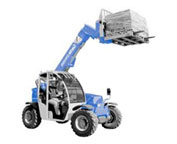
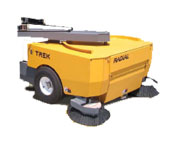
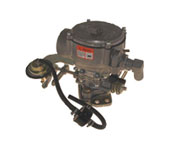
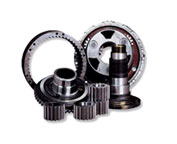
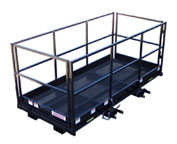
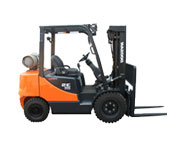
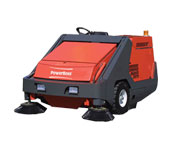
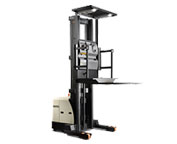
Lift Parts Express
TOLL FREE: 1-888-695-7994
LOCAL: 915-218-6153
9630 BRUCEVILLE RD 106-381
Elk Grove, California
forkliftpartselkgrove.com
Email Us
About Us


